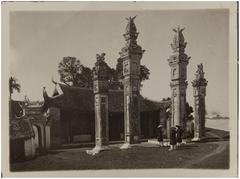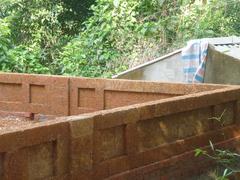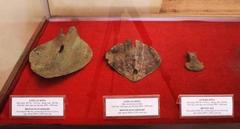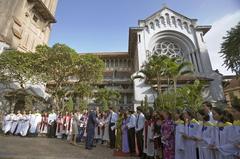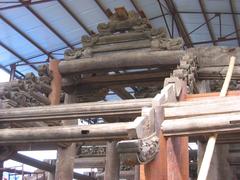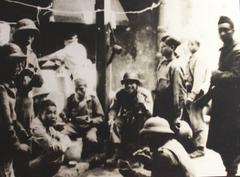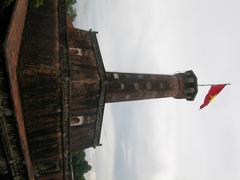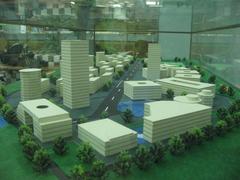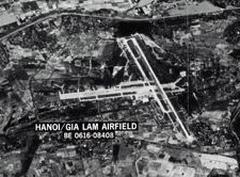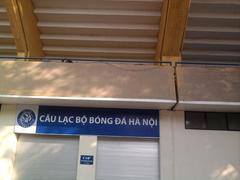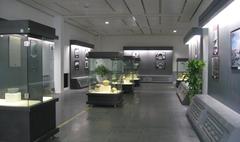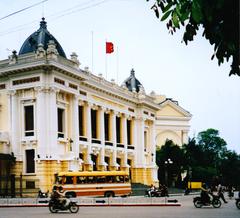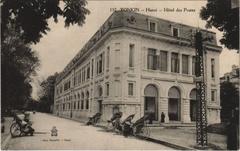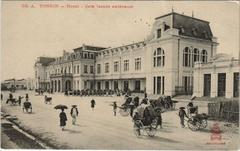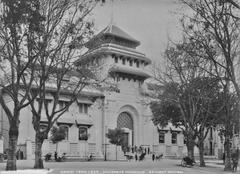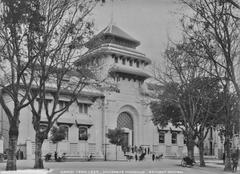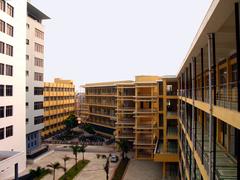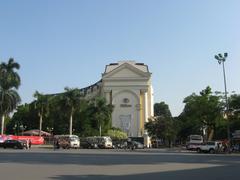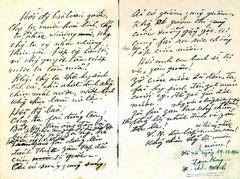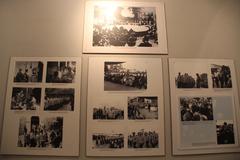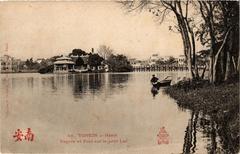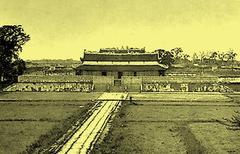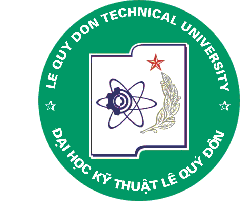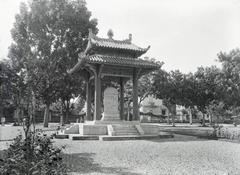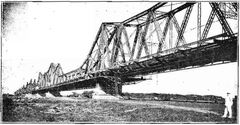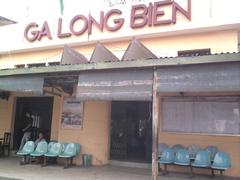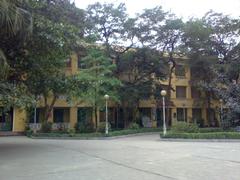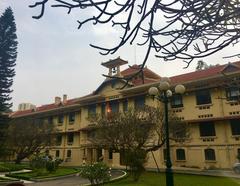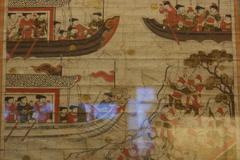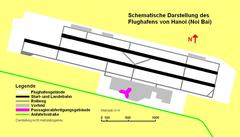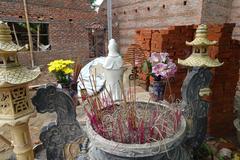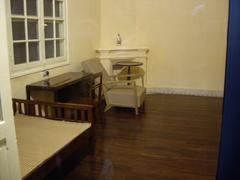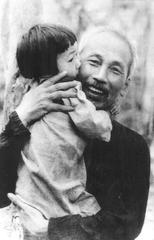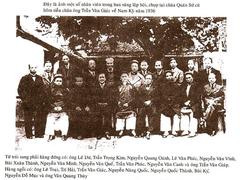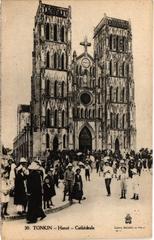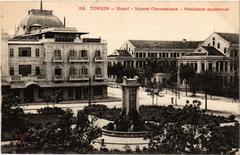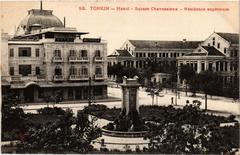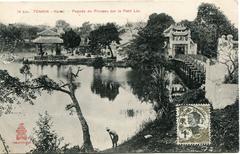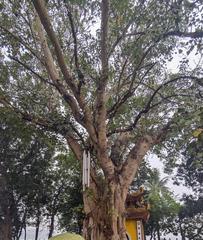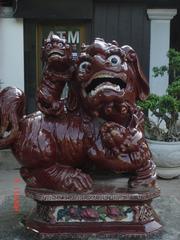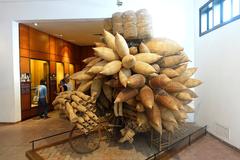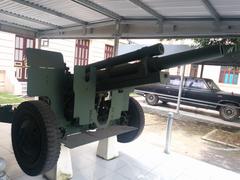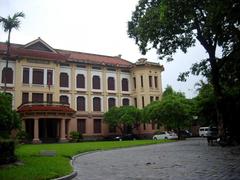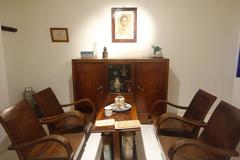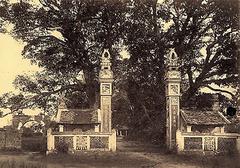Phù Lỗ, Hanoi: Visiting Hours, Tickets, and Historical Sites Guide
Date: 04/07/2025
Introduction: History and Significance of Phù Lỗ, Hanoi
Phù Lỗ, a commune in Sóc Sơn District on Hanoi’s northern edge, is a vibrant gateway to Vietnam’s ancient past and enduring traditions. With a strategic location linking the fertile Red River Delta to the northern highlands, Phù Lỗ has been continuously inhabited for millennia, witnessing early Vietnamese state formations, dynastic history, and the flourishing of spiritual and artistic heritage.
Noteworthy sites include the Sóc Sơn Temple Complex, honoring the legendary hero Thánh Gióng—a symbol of Vietnamese resilience. The area’s annual Gióng Festival is recognized by UNESCO for its cultural importance. Phù Lỗ also features the Việt Phủ Thành Chương cultural complex, which preserves traditional architecture and hosts water puppet shows. Visitors will find an authentic slice of rural Vietnamese life, complete with festivals, crafts, and scenic landscapes.
This guide provides essential information on opening hours, ticketing, accessibility, local customs, and travel tips for a respectful and immersive visit. For further details, consult sources such as Mytour.vn, VinWonders, and the official Hanoi tourism website.
Table of Contents
- Discover Phù Lỗ: A Gateway to Hanoi’s Rich History and Culture
- Early History and Strategic Location
- Dynastic Influences and Religious Heritage
- Legends, Folklore, and the Gióng Festival
- Architectural and Artistic Heritage
- Socio-Cultural Continuity and Community Life
- Modern Developments and Cultural Preservation
- Practical Visitor Information: Visiting Hours, Tickets, and Tours
- Sóc Sơn Temple Complex: Hours, Tickets, and Visitor Guide
- Community Engagement, Local Life, and Customs
- Transportation and Accessibility
- Travel Tips: Best Times, Safety, and Responsible Tourism
- Frequently Asked Questions (FAQs)
- Emergency Contacts and Useful Numbers
- Summary and Recommendations
- References
Discover Phù Lỗ: A Gateway to Hanoi’s Rich History and Culture
Phù Lỗ is a captivating destination for those interested in Vietnam’s heritage and traditions. Its strategic position connects the Red River Delta with northern highlands, offering a blend of historic landmarks, religious sites, and vibrant festivals. Use this guide for essential information on visiting hours, ticketing, attractions, and practical tips for exploring Phù Lỗ’s historical sites.
Early History and Strategic Location
Phù Lỗ lies within the ancient heartland of the Red River civilization, with evidence of continuous habitation dating back thousands of years. Nearby sites like the Co Loa Citadel, dating to the 3rd century BCE, reveal advanced fortifications and social structures (Mapcarta). Proximity to the legendary capital of King An Dương Vương situates Phù Lỗ at the core of Vietnam’s early statehood. Fertile plains and trade routes have fostered prosperity and cultural exchange.
Dynastic Influences and Religious Heritage
Successive dynasties, such as the Lý and Trần, fostered the growth of Buddhism and built pagodas and temples still visible today. The Sóc Sơn Temple Complex (Gióng Temple), on the Vệ Linh mountain range, honors Thánh Gióng—a legendary hero. The complex, originally a small shrine and the Non Nước Pagoda built during King Đinh Tiên Hoàng’s reign, has been expanded and restored over the centuries (Mytour.vn).
Another highlight is Đức Hậu Pagoda, dating to the Late Lê Dynasty. Its chữ đinh (丁) layout and traditional architecture exemplify northern Vietnam’s religious structures.
Legends, Folklore, and the Gióng Festival
Phù Lỗ’s identity is deeply connected to the legend of Thánh Gióng. According to folklore, Gióng was a miraculous child who defended the Viet people against invaders and ascended to heaven from Sóc Sơn. The annual Gióng Festival, recognized by UNESCO as Intangible Cultural Heritage, features processions, ritual performances, and traditional singing at the Sóc Sơn Temple Complex. It draws thousands of pilgrims and visitors each year (VinWonders).
Architectural and Artistic Heritage
The architectural landscape of Phù Lỗ reflects its historical depth. Việt Phủ Thành Chương, a private museum and cultural complex, spans 8,000 square meters and features more than 30 reconstructed traditional buildings—ancient houses, communal halls, and pagodas (Mytour.vn). Thousands of artifacts from the Đinh, Lý, Trần, and Lê dynasties are on display. Traditional water puppet performances, a unique northern art form, further enrich the visitor experience.
Socio-Cultural Continuity and Community Life
Despite urban growth, Phù Lỗ retains a rural character. Village temples, communal houses, and markets remain central to daily life. Festivals, ancestor worship, and folk performances reflect a blend of Confucian, Buddhist, and indigenous beliefs. The area’s agricultural landscape—rice paddies, fish ponds, and gardens—remains prominent. Community events, such as the Vu Lan (Wandering Souls Festival), foster social bonds and cultural continuity (Matador Network).
Modern Developments and Cultural Preservation
While modernization has brought improved infrastructure and connectivity, cultural preservation is a priority in Phù Lỗ. Sites like Việt Phủ Thành Chương and the Sóc Sơn Temple Complex are diligently maintained. Local authorities promote festivals and traditional crafts as part of cultural tourism, and UNESCO recognition of the Gióng Festival underlines the importance of safeguarding local heritage (VinWonders).
Practical Visitor Information: Visiting Hours, Tickets, and Tours
Opening Hours
- Sóc Sơn Temple Complex: 7:00 AM – 5:00 PM daily
- Đức Hậu Pagoda: 8:00 AM – 4:30 PM daily
- Việt Phủ Thành Chương: 8:00 AM – 6:00 PM daily
Admission Tickets
- Sóc Sơn Temple Complex: Free entry (donations welcome)
- Đức Hậu Pagoda: Free entry
- Việt Phủ Thành Chương: ~100,000 VND per adult
Guided Tours
Guided tours for Việt Phủ Thành Chương and Sóc Sơn Temple Complex are available, often including water puppet shows and cultural workshops. Booking in advance is recommended through local agencies or online platforms.
Accessibility
Sites are reachable by car, motorbike, or public bus from Hanoi (about one hour). Some religious sites have steps and uneven paths—comfortable footwear is advised.
Ticket Purchase
Việt Phủ Thành Chương tickets can be purchased onsite or online. Most pagodas and temples don’t require tickets, but donations are appreciated.
Sóc Sơn Temple Complex: Hours, Tickets, and Visitor Guide
Overview
Sóc Sơn Temple (Đền Sóc) is a prominent historical and spiritual site, dedicated to Saint Giong. Set amidst forests and hills, the complex offers a tranquil escape from Hanoi.
Visitor Information
- Opening Hours: 7:00 AM – 5:00 PM
- Entrance Fee: 20,000 VND per person
- Guided Tours: ~150,000 VND; book at the ticket office or through tour operators
Accessibility
Paved paths are present, but some hilly areas may be challenging. Wheelchair access is limited—contact the site in advance if needed.
Special Events
The Sóc Sơn festival, in the lunar month of April, includes ceremonies, folk games, and performances celebrating Saint Giong.
Getting There
- By Road: National Highway 2 passes through Phù Lỗ.
- By Public Transport: Several Hanoi bus routes connect to Phù Lỗ and Sóc Sơn.
- Private Transport: Taxis and ride-hailing services are available.
Nearby Attractions
- Thanh Chuong Viet Palace: 15 km away, showcasing Vietnamese art and architecture.
- Dong Quan Lake: Popular for fishing and relaxation.
- Ham Lon Mountain: A favorite for hiking and panoramic views.
Local Culture and Cuisine
Enjoy traditional village life and sample dishes like phở and bún chả at local markets and eateries.
Community Engagement, Local Life, and Customs
Phù Lỗ’s daily life revolves around traditional values. Visitors are welcomed into a community where respect, hospitality, and cultural continuity are central. Participate in festivals like Lunar New Year (Tết) or Mid-Autumn Festival to experience music, dance, and cuisine. Support local artisans by purchasing crafts and trying regional dishes.
Customs and Etiquette
- Greet elders with a bow and polite language.
- Wait for the eldest to begin meals; share dishes communally.
- Dress modestly, especially in temples.
- Remove shoes before entering homes or sacred spaces.
- Avoid public displays of affection and loud behavior.
Transportation and Accessibility
Phù Lỗ is about 7 km from Nội Bài International Airport and 25 km from Hanoi’s center.
- By Air: Arrive at Nội Bài, then take a taxi, bus, or ride-hailing service.
- By Road: At the junction of National Highways 2 and 3; buses (routes 07, 17, 56) connect to Hanoi.
- By Rail: Nearest station is Sóc Sơn (10 km away) with limited service.
Travel Tip
Agree on fares in advance or use reliable ride-hailing apps to avoid overcharging.
Travel Tips: Best Times, Safety, and Responsible Tourism
Best Time to Visit
- Spring (Feb–Apr): Mild, with blooming flowers—ideal for festivals.
- Autumn (Sep–Nov): Cool and clear, best for outdoor activities.
Safety and Health
- Phù Lỗ is generally safe, but watch for petty theft in crowded areas.
- Roads can be busy—exercise caution.
- Use bottled or filtered water; bring mosquito repellent during rainy season.
Responsible Tourism
- Support community-based tourism and social enterprises.
- Reduce waste—bring reusable bottles and bags.
- Respect nature and local customs.
- Buy local crafts and avoid wildlife products.
Frequently Asked Questions (FAQs)
Q: What are the best times to visit Phù Lỗ?
A: During the Gióng Festival (first lunar month), spring, or autumn.
Q: Are there entrance fees for historical sites?
A: Most temples and pagodas are free; Việt Phủ Thành Chương and Sóc Sơn Temple may charge modest fees.
Q: How can I get to Phù Lỗ from Hanoi?
A: By car, motorbike, or public bus (routes 07, 17, 56); about one hour.
Q: Is advance booking necessary?
A: Recommended for Việt Phủ Thành Chương and guided tours, especially during festivals.
Q: Are sites accessible for visitors with special needs?
A: Some accessibility limitations exist—contact sites in advance for assistance.
Emergency Contacts and Useful Numbers
- Police: 113
- Ambulance: 115
- Fire: 114
- Tourist Support Hotline (English): 1800 1109
- Embassy/Consulate: Check your country’s office in Hanoi
Summary and Recommendations
Phù Lỗ offers a unique blend of ancient heritage, living traditions, and rural tranquility on Hanoi’s doorstep. Its temples, festivals, and cultural sites provide insight into Vietnamese history and community life. Plan your visit around festivals or favorable weather; respect customs, and support sustainable tourism for a rewarding experience.
For up-to-date information and travel planning, download the Audiala app and follow official tourism channels. Explore more about Phù Lỗ and nearby attractions to enrich your understanding of Vietnam’s past and present.
References
- Mytour.vn – Top 11 Most Popular Tourist Spots in Sóc Sơn District, Hanoi
- VinWonders – Discover Festivals in Hanoi
- Hanoi Tourism Website
- Matador Network – Hanoi Festivals
- Mapcarta – Co Loa Citadel Overview


